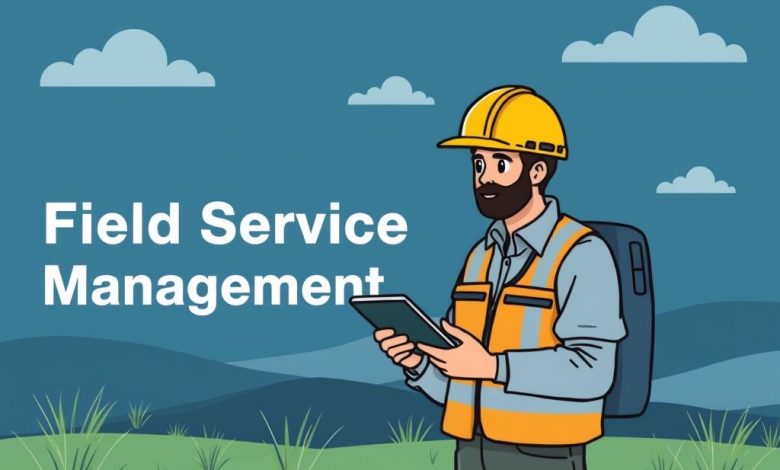Field Service Management with Technician Journey Optimization

Introduction
Field Service Management (FSM) is a critical component of many businesses, particularly in industries such as HVAC, electrical work, plumbing, and home maintenance. It involves managing and coordinating the activities of technicians who provide services directly to customers at their locations. In recent years, there has been a growing emphasis on optimizing the journey of these technicians to improve efficiency, reduce costs, and enhance customer satisfaction.
Technician Journey Optimization (TJO) is a subset of FSM that focuses specifically on streamlining the path that technicians take when visiting multiple job sites. This optimization aims to minimize travel time, reduce fuel consumption, and ensure that technicians arrive at each location in the most efficient order possible.
In this article, we will explore the concept of Field Service Management with a focus on Technician Journey Optimization. We will discuss the importance of both FSM and TJO, examine the challenges faced by field service organizations, and explore various strategies and technologies used to optimize technician journeys.
The Importance of Field Service Management
Field Service Management is crucial for businesses that rely heavily on mobile workers to deliver services directly to customers. Some key reasons why FSM is essential include:
- Improved Customer Satisfaction: By ensuring that technicians arrive promptly at scheduled appointments, FSM helps maintain high levels of customer satisfaction.
- Increased Efficiency: Proper management of field operations allows companies to complete more jobs in less time, leading to increased productivity.
- Cost Reduction: Optimized scheduling and routing can significantly reduce fuel consumption and lower operational costs.
- Better Resource Allocation: FSM systems help manage inventory, equipment, and personnel effectively, ensuring that the right resources are available at the right time.
- Data-Driven Decision Making: Advanced FSM solutions provide valuable insights into business performance, allowing managers to make informed decisions.
Challenges in Field Service Management
Despite its importance, implementing effective Field Service Management presents several challenges:
- Scheduling Complexity: Coordinating multiple technicians across numerous job sites while considering factors like availability, skill sets, and travel times can be extremely complex.
- Real-Time Updates: Ensuring that all stakeholders have access to real-time information about job status, technician location, and any changes to schedules is challenging.
- Equipment Maintenance: Managing and tracking the condition of service vehicles and tools is crucial but often overlooked.
- Customer Communication: Keeping customers informed about appointment details, delays, or cancellations is a significant challenge.
- Technological Integration: Integrating FSM systems with other business software, such as CRM or accounting systems, can be difficult and time-consuming.
The Role of Technician Journey Optimization
Technician Journey Optimization is a specialized aspect of Field Service Management that focuses on optimizing the routes taken by technicians when visiting multiple job sites. The goal of TJO is to minimize travel time, reduce fuel consumption, and ensure that technicians visit locations in the most efficient order possible.
Some key benefits of TJO include:
- Reduced Travel Time: By analyzing historical data and current traffic conditions, TJO algorithms can create optimized routes that save time and fuel.
- Lower Operational Costs: Minimizing travel time and reducing unnecessary miles driven leads to significant cost savings.
- Improved Work-Life Balance: With shorter overall travel times, technicians may experience reduced stress and improved work-life balance.
- Enhanced Customer Experience: When technicians arrive at job sites more quickly, it generally leads to higher customer satisfaction scores.
- Increased Productivity: By minimizing travel time between jobs, technicians can complete more service calls within their allocated hours.
Strategies for Implementing Technician Journey Optimization
Several strategies can be employed to implement Technician Journey Optimization:
- Route Optimization Software: Utilize advanced route optimization algorithms that consider factors like traffic patterns, road closures, and job priorities.
- Real-Time Traffic Updates: Integrate live traffic data into the optimization process to account for unexpected delays.
- Historical Data Analysis: Analyze past job data to identify common patterns and optimize routes based on this information.
- Dynamic Scheduling: Allow for last-minute adjustments to schedules based on changing circumstances or priority shifts.
- Mobile Apps: Provide technicians with intuitive mobile apps that guide them through optimized routes and provide real-time updates.
- GPS Tracking: Implement GPS tracking to monitor technician locations and adjust routes in real-time if necessary.
- Job Prioritization: Develop algorithms that prioritize jobs based on urgency, distance from previous jobs, and other factors.
- Multi-Criteria Optimization: Consider multiple criteria beyond just distance, such as job complexity, technician skills, and customer preferences.
Technologies Supporting Technician Journey Optimization
Several technologies play a crucial role in supporting Technician Journey Optimization:
- Geographic Information Systems (GIS): GIS technology provides detailed maps and spatial analysis capabilities that are essential for route planning.
- Internet of Things (IoT): IoT devices can track vehicle location, fuel consumption, and other metrics to provide valuable insights for optimization.
- Artificial Intelligence (AI): AI-powered algorithms can analyze vast amounts of data to create highly optimized routes and schedules.
- Cloud Computing: Cloud-based solutions allow for seamless integration of data from various sources and enable real-time collaboration among team members.
- Big Data Analytics: Advanced analytics capabilities help identify trends and patterns in field service operations, enabling continuous improvement.
Conclusion
Field Service Management with Technician Journey Optimization is a powerful combination that can significantly improve the efficiency and effectiveness of field service operations. By leveraging advanced technologies and sophisticated algorithms, businesses can streamline their operations, reduce costs, and enhance customer satisfaction.
As the field service industry continues to evolve, it’s clear that FSM and TJO will remain crucial components of successful business strategies. Companies that invest in robust FSM and TJO solutions will likely gain a competitive advantage in terms of operational efficiency, customer satisfaction, and bottom-line results.
For field service managers looking to optimize their operations, it’s essential to stay informed about the latest developments in FSM and TJO technologies. By embracing these innovations and continuously refining their processes, managers can ensure that their teams operate at peak efficiency, delivering exceptional value to customers while maintaining healthy profit margins.




